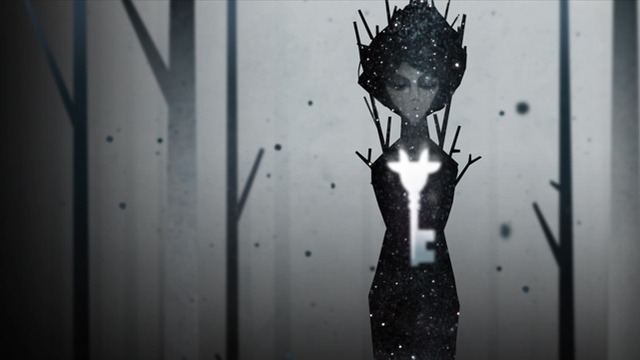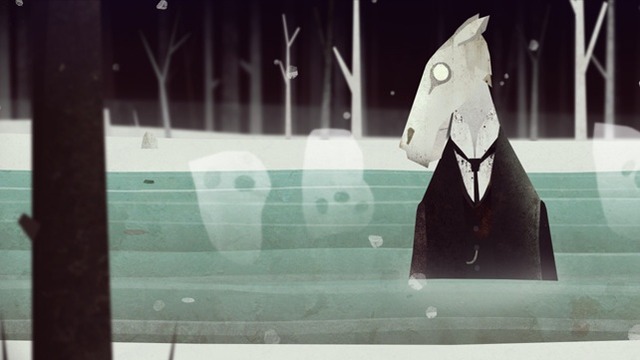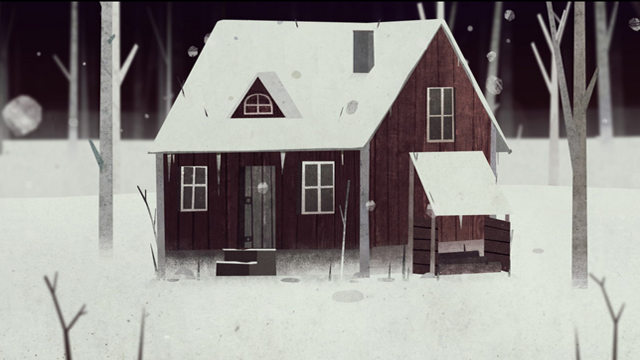Back in 2010, two gentlemen from Sweden began creating iOS games as Simogo. Recently, I had the opportunity to speak with the man that’s responsible for the art and sound in Simogo games – Simon Flesser.
Back in February, Year Walk came to the App Store and has proven to be Simogo’s biggest success, yet. With brilliant art design, terrific use of sound and an engaging narrative, Year Walk is one of those iOS games that definitely breaks the mould. The differences between the studio’s latest game and their previous efforts is startling and naturally, that was the first thing I asked Simon about:
The concept of Year Walk strays a bit from what Simogo has done previously. For example, my first encounter with your work was Beat Sneak Bandit, yet in terms of tone, gameplay and general presentation, your latest game is very different – almost to the point where you wouldn’t associate Year Walk with Simogo because it is such a departure from your other games. Was this shift a big decision for the studio?
Yes and no. It wasn’t a concious choice, really. Ultimately, we just create the things that we want to create and we had talked about doing something that felt a little more serious or perhaps dark for quite a while. But sure, we were somewhat nervous about how our fans would react, but in the end I think they appreciate the things we do not because of a certain tone, but because we always strive to make original and unique things.
And I believe two factors behind fans really enjoying Year Walk are its art direction and sound design. As you said, they are both very unique to the experience and create a really eery atmosphere throughout. With regards the score, I believe this is the first game where Simogo didn’t handle music duties yourselves, right?
Yes, the music was made by Daniel Olsén this time. We worked with Daniel Olsén at Southend. Among the things he made there is the music for ilomilo, which I believe is one of the most unsung video game soundtracks ever! Jonathan Eng contributed with one special song, too.

I think its fair to say that Year Walk really throws the player into the game without much prompting or “hand-holding”. At any stage in development, did you think you were ever taking the cryptic nature of some of the puzzles too far?
If anything I think we might have made some of the puzzles a little on the easy side, haha.
Really? That’s interesting. Without giving anything away – if you could change anything about the game, would you?
Hm…In theory we could change it all the time, because of the ease of updates in the app store, but we are choosing not too. I think updates and changing games can sometimes feel a bit revisionistic…That said, I think I would’ve enjoyed putting in more lore about Vedtorp in there.

I wanted to get on to that because some of our readers may not be aware of the folklore behind Year Walk. Being a Swedish developer and using Swedish ‘lore as the basis for your game, do you ever wonder why so many non-US studios try to bring that American – almost Hollywood feel – to their projects, rather than adding their own national flare?
I wonder about that yeah, perhaps not specifically about the national aspect, but the inability or refusal to dream up themes that are based on unfamiliar or unexplored themes. I think that is one of the biggest problems of the gaming industry. It’s culturally feeding itself, which in turns makes it uninteresting for people without a gaming background, so there can never come in new blood; and the endless cycle of men shooting men continues.
Mobile gaming provides challenges and opportunities for developers to tackle issues in many different ways and Year Walk is an example of utilising the platform’s strengths. Across the board, do you think mobile gaming is growing with interesting ideas, or becoming stagnant because of developers trying to add controller inputs such as virtual buttons? Do you think there’s a place for both, perhaps? For instance, you bring up the “men shooting men” example. Do you see anything like that happening in the mobile space? Not literally, but in terms of homogenous content.
I wish virtual buttons could just dissappear and never be seen again. 😀
Yeah, of course. It’s all about the money in the end so whatever is hot at the moment you’ll always see loads of variant of, whether that is fruits, cars or birds.

Sure, there are a lot of copy cat titles in the mobile space, too. But, when a developer such as yourself is using the platform in an interesting way, that’s picked up – and not just by the “hardcore”. Recently, you announced that Year Walk has been downloaded 100,000 times. Obviously, you must be ecstatic with that news. Are there any plans to capitalise on that with Year Walk 2? Or will the studio be embarking on a different direction once again for game 5?
It won’t be a totally different direction. It definitely won’t be a sequel to Year Walk, but it will continue in the more experimental narrative space.
And Year Walk’s narrative is certainly experimental as a lot of its explanation lies in the Companion app, which is another aspect of your game that you don’t see in many other iOS titles. When did you decide to keep the Year Walk Companion and Year Walk itself, as separate downloads on the App Store? Also, why?
So, the main reason to keep the companion as a stand alone thing is to create a narrative that exists in the same world as the player. So in a lot of ways it’s a narrative device, but also helps us to keep the game totally uncluttered. We wanted to make something that felt alone and atmospheric, almost like a silent film, and I think having menus and that kind of thing would’ve ruined that feeling.
Also, it just feels neat to have it as a seperate thing, almost like manuals back in the day.
Finally, every interviewee we speak to is asked the same burning question at the end…do you keep your tomato ketchup in the fridge, or in the cupboard?
Well I think keeping it in a bottle would probably be the least messiest?
Year Walk is available now for iOS devices.






